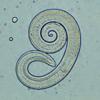Hello, I am hoping someone can give me some insight on indicators and how to determine our limits/ranges.
We have 4 different kinds of productions:
1. Dry Blending - all dry ingredients blended together into a super sack used for Hot Extruded treats 99% of the time. Dry Cleanouts used.
2. Cold Extrusion - Dry Ingredients, oils, NO Water or heat used. All products are tested for Salmonella before shipping. Dry Cleanouts used between batches daily, total cleanout but still no water used once a week.
3. Hot Extrusion - steam and high heat used for production, cleanouts between orders,1x week wet clean.
4. Baked Goods - clean outs between orders, wet clean 1x week.
Then we have our Packaging room which is all dry cleaned. Alpet D2 Quat Free Sanitizer used on all equipment after (in each department).
We have done APC, TEC, mold and Yeast testing. In Cold Extrusion the numbers are extremely high ranging from hundred thousand - 1 million for APC. TEC is 100 - 1,000. This is after their weekend clean.
During out SQF Audit the auditor said that those counts are extremely high, our consultant gave us ranges after our Internal audit for Finished Goods, Raw Good, and Floors. Most of our swabs were past those limits though.
I am learning now that each facility is different and it depends on the product that is being run but we have hundreds of different products/formulas in our facility.
How do I find out what our Ranges are?
Thank You














